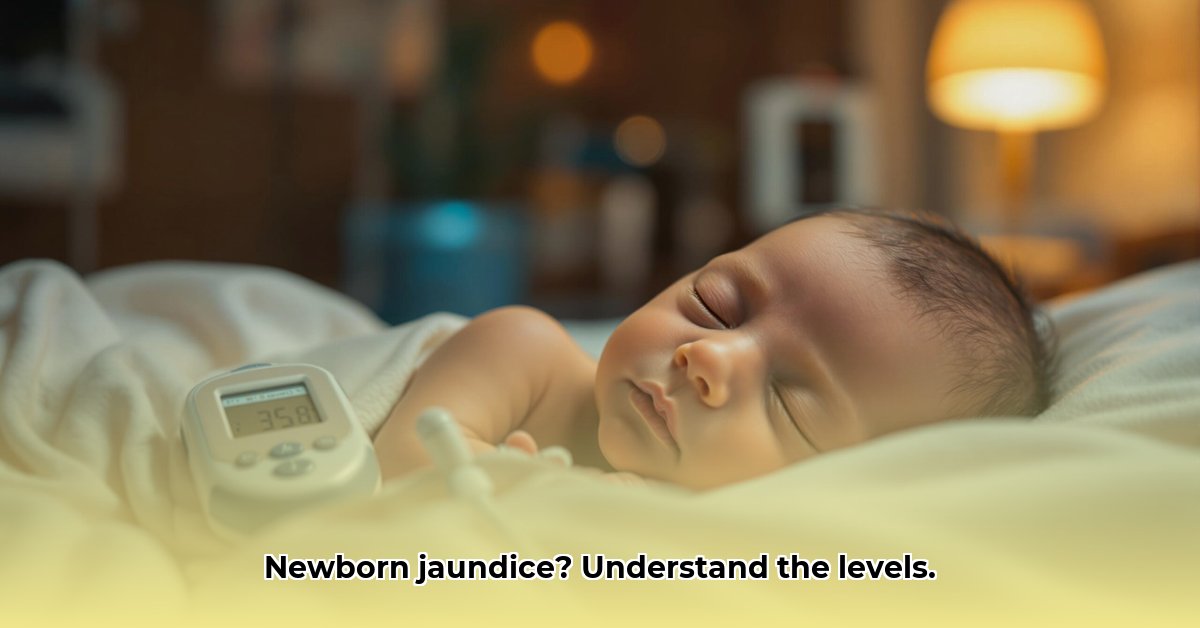Is your little one a bit jaundiced? Seeing those numbers on the bilirubin test can be unsettling, but it’s actually quite common. This guide will help you understand what those bilirubin levels mean, what’s considered normal, and what to do if your baby’s levels are a little high. We’ll explain everything in simple terms, so you can feel confident and know what steps to take. We’ll cover the basics of bilirubin scans, what treatments might be needed, and how you can support your baby’s well-being. For a non-invasive bilirubin check, learn more about [transcutaneous bilirubinometry](https://txgenco.com/transcutaneous-bilirubinometer). Let’s get started on this journey to a healthy start for your little one!
Bilirubin Level Scan for Newborns: A Parent’s Guide
Welcome, new parents! This guide will help you understand bilirubin level scans for your newborn and neonatal jaundice, a common occurrence. Knowing what it means can ease any worries you might have about bilirubin levels and newborn screening.
What is Jaundice – That Yellow Tint?
Many newborns develop jaundice, a yellowish coloring of the skin and whites of the eyes. It’s usually nothing to panic about; it’s quite common. It happens because a baby’s liver, still developing, isn’t yet fully equipped to handle bilirubin. Bilirubin is a yellow pigment created when the body breaks down old red blood cells. When the liver can’t process it fast enough, bilirubin builds up, causing that yellowish hue. Most babies will clear jaundice on their own without any issues, but what are the treatment options?
Understanding Bilirubin Level Scans: What Happens?
To check for jaundice and measure the bilirubin level, your doctor will perform a bilirubin scan. There are two main types:
- Total Serum Bilirubin (TSB): This involves a tiny blood sample, usually taken from the baby’s heel. The test measures the total amount of bilirubin in your baby’s bloodstream.
- Transcutaneous Bilirubin (TcB): This is a non-invasive option. A special device gently touches your baby’s skin, typically on the forehead or sternum, to estimate the bilirubin level. It’s not quite as precise as the TSB, but it’s a great screening tool—no needles involved!
Both tests are fairly quick, and the results help your doctor assess your baby’s bilirubin level.
What Do the Numbers Mean? Deciphering the Results
There’s no single “normal” bilirubin number. What’s considered normal depends on several factors: how old your baby is (in hours), how early they were born (gestational age), and their overall health. Generally, bilirubin levels are measured in milligrams per deciliter (mg/dL). A typical bilirubin level for a newborn is less than 5 mg/dL, but this level can rise in the first few days of life. Your doctor will interpret the results based on established guidelines and your baby’s specific circumstances. Don’t hesitate to ask questions; understanding the results is key, but what increases bilirubin levels?
Factors That Can Increase Bilirubin Levels
While often mild, several factors can increase the likelihood of higher bilirubin levels, impacting newborn health. These include:
- Premature Birth: Babies born early often have underdeveloped livers, affecting their ability to process bilirubin efficiently. Premature babies are at a higher risk of developing jaundice.
- Blood Type Incompatibility: If the mother and baby have different blood types, the mother’s body might produce antibodies that break down the baby’s red blood cells, leading to jaundice. This is often related to Rh incompatibility or ABO incompatibility.
- Breastfeeding Challenges: While breastfeeding is encouraged, insufficient milk intake can lead to dehydration, which can elevate bilirubin levels. This is known as breastfeeding jaundice and usually resolves with more frequent and effective feeding.
- Breast Milk Jaundice: This is different from breastfeeding jaundice. Certain substances in breast milk can sometimes interfere with the baby’s ability to process bilirubin, leading to prolonged jaundice that can last for several weeks.
- Infections: Certain infections in the newborn, such as sepsis, can sometimes contribute to increased bilirubin levels by impairing liver function.
- Genetic Conditions: In rare cases, genetic conditions like Gilbert’s syndrome or glucose-6-phosphate dehydrogenase (G6PD) deficiency can affect bilirubin metabolism.
- Cephalohematoma: This is a collection of blood under the scalp, often caused by a difficult delivery. The breakdown of this blood can increase bilirubin levels.
Are treatment options available for elevated levels?
Treatment Options if Bilirubin is Elevated
If your baby’s bilirubin levels are higher than your doctor would like, they’ll suggest the best course of action, including newborn phototherapy. The most common treatments are:
- Phototherapy (Light Therapy): This involves placing your baby under special blue lights. These lights help break down the bilirubin into a form that the baby can excrete more easily in their urine and stool. During phototherapy, the baby will wear only a diaper and protective eye coverings. It’s a very common and effective treatment, with minimal side effects.
- Exchange Transfusion (Rare): This is a more involved procedure, only used in severe cases when bilirubin levels are dangerously high and phototherapy isn’t effective. It involves replacing some of your baby’s blood with fresh donor blood. It is carefully monitored and only used when absolutely necessary to rapidly lower bilirubin levels and prevent complications.
- Frequent Feedings: More frequent feedings, whether breastfeeding or formula feeding, help your baby eliminate bilirubin through their stool.
When should you contact your doctor?
When to Contact Your Doctor Immediately
While most cases of jaundice are mild, it’s important to be vigilant. Contact your doctor immediately if you notice:
- Intense Yellowing: The yellow color is very noticeable, especially in the whites of your baby’s eyes, or a deep yellow color is spreading across their body, particularly down to the abdomen or legs.
- Lethargy or Irritability: Your baby seems unusually sleepy, difficult to wake, fussy, or difficult to comfort.
- Feeding Difficulties: Your baby seems less interested in feeding, is refusing to feed, or is having trouble latching and sucking effectively.
- High-Pitched Cry: A change in the baby’s cry, especially a high-pitched cry, can be a sign of neurological involvement due to high bilirubin levels.
- Any Concerns: If you have any concerns, no matter how small they may seem, contact your physician. It’s always better to be safe than sorry. Early detection and intervention are important to ensure early intervention.
What is your role as parents?
Your Role in Your Baby’s Care: Teamwork Makes the Dream Work!
You play a vital role in managing your baby’s jaundice, and bilirubin management. Diligent feeding is essential to monitor for newborn jaundice symptoms. Keep a close watch on your baby’s skin and eyes for any changes. Follow your doctor’s recommendations closely. Regular check-ups allow for monitoring. Most importantly, remember that you are a key part of your baby’s health care team, and your observations are incredibly valuable.
Home Phototherapy
In some instances, if the bilirubin level is within a specific range and the baby is otherwise healthy, the doctor may prescribe home phototherapy. In this case, you’ll be given a fiberoptic blanket to wrap around your baby. This can be a convenient way to administer treatment while maintaining close contact with your baby.
Are there any positive outcomes to look forward to?
Looking Ahead: A Positive Outlook
Understanding your baby’s bilirubin level is key to ensuring their health and neonatal care. Ask your doctor any and all questions you might have. Early detection and treatment are important for the best possible outcome. Remember, most cases of newborn jaundice resolve without any long-term effects. This guide provides information, but remember, it is not a substitute for direct medical advice from your healthcare provider. They’re your best resource for your baby’s specific situation. How can you interpret the newborn jaundice bilirubin chart?
How to Interpret Newborn Jaundice Bilirubin Levels Chart
Key Takeaways:
- Neonatal jaundice, characterized by yellowing of the skin and eyes, is common.
- Bilirubin levels are measured to assess jaundice severity.
- Treatment depends on the baby’s age, risk factors, and bilirubin levels.
- How to interpret newborn jaundice bilirubin levels chart requires understanding total serum bilirubin (TSB) and transcutaneous bilirubin (TcB).
- Healthcare providers use these measurements to guide treatment decisions.
- Frequent feeding, monitoring, and prompt medical attention are crucial for managing bilirubin levels in newborns.
Understanding Bilirubin and its Measurement
Newborn jaundice happens because a baby’s liver isn’t fully developed yet. This means it can’t process bilirubin efficiently. Bilirubin is a yellowish pigment formed when red blood cells break down. A build-up causes the yellow discoloration.
There are two main ways to measure bilirubin levels:
- Total Serum Bilirubin (TSB): This is a blood test that measures the total amount of bilirubin in your baby’s blood. It’s the most accurate measure. The blood sample is typically taken from the baby’s heel.
- **Transcutaneous Bilirubin
- Water Wheel Electric Generator Provides Free Home Electricity - December 15, 2025
- Choosing the Right Portable Hydro Turbine for Your Needs - December 14, 2025
- Best Portable Hydro Generators for Off-Grid and Outdoor Power - December 13, 2025
















